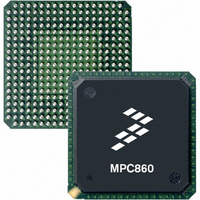MC68EN360ZQ25VL Freescale Semiconductor, MC68EN360ZQ25VL Datasheet - Page 742

MC68EN360ZQ25VL
Manufacturer Part Number
MC68EN360ZQ25VL
Description
IC MPU QUICC 32BIT 357-PBGA
Manufacturer
Freescale Semiconductor
Datasheets
1.MC68EN302AG20BT.pdf
(8 pages)
2.MC68EN360VR25L.pdf
(14 pages)
3.MC68EN360VR25L.pdf
(2 pages)
4.MC68EN360ZQ25VL.pdf
(962 pages)
Specifications of MC68EN360ZQ25VL
Processor Type
M683xx 32-Bit
Speed
25MHz
Voltage
3.3V
Mounting Type
Surface Mount
Package / Case
357-PBGA
Family Name
M68xxx
Device Core
ColdFire
Device Core Size
32b
Frequency (max)
25MHz
Instruction Set Architecture
RISC
Supply Voltage 1 (typ)
3V
Operating Supply Voltage (max)
3.3V
Operating Supply Voltage (min)
2.7V
Operating Temp Range
0C to 70C
Operating Temperature Classification
Commercial
Mounting
Surface Mount
Pin Count
357
Package Type
BGA
Lead Free Status / RoHS Status
Contains lead / RoHS non-compliant
Features
-
Lead Free Status / Rohs Status
Not Compliant
Available stocks
Company
Part Number
Manufacturer
Quantity
Price
Company:
Part Number:
MC68EN360ZQ25VL
Manufacturer:
Freescale Semiconductor
Quantity:
10 000
- MC68EN302AG20BT PDF datasheet
- MC68EN360VR25L PDF datasheet #2
- MC68EN360VR25L PDF datasheet #3
- MC68EN360ZQ25VL PDF datasheet #4
- Current page: 742 of 962
- Download datasheet (4Mb)
Applications
The RBASE and TBASE values are new to the QUICC. They point to the start of the buffer
descriptor tables, must be long-word aligned, and must point to the dual-port RAM area.
The RFCR and TFCR registers have one additional purpose and a different bit placement
on the QUICC. If RFCR and TFCR are cleared on the MC68302 or not used with the
MC68302, then the equivalent function on the QUICC can be implemented by writing $18 to
the QUICC RFCR and TFCR. Note that on the QUICC there is an additional function code
pin to signify DMA operation, and the suggestion of $18 uses this capability.
The MRBLR value has the same function on both devices. Additionally, if the receive FIFO
is set to 32-bit-wide mode, the MRBLR value must be aligned to a long word.
The internal state parameter has the same function on both devices.
The MC68302 RBD# and TBD# have the same concept on the QUICC, except the param-
eters are called RBPTR and TBPTR and are now 16-bit values. They point to the current
buffer descriptor; however, they are now offsets from the beginning location of the QUICC
dual-port RAM. For example, the current transmit buffer descriptor location may be found by
MBAR + TBPTR.
The internal data pointer parameter has the same function on both devices.
The internal byte count parameter has the same function on both devices.
9.3.4.2.3 Protocol-Dependent Parameter RAM Values. These values are very similar
between devices, although new functions are often added on the QUICC. Where possible,
any parameter for a given protocol that is the same for the MC68302 and the QUICC carries
the same name on both devices.
The following points note changes between the MC68302 and the QUICC protocol-depen-
dent parameter RAM for a given protocol:
9-22
In the UART mode, if the MAX_IDL entry is programmed to $0000 on the QUICC, the
function will be disabled.
In the UART mode, the ability to send special control characters, such as XOFF, no longer
requires the CHARACTER8 entry. Rather, a new entry, called the TOSEQ entry, has
been created. The programming of the TOSEQ entry, however, is the same as the old
MC68302 CHARACTER8 entry.
In UART mode, note the new parameters for a receive character mask (RCCM) and a
function that times the length of a receive break (BRKLN).
The HDLC parameter RAM is the same, except for two new entries: RFTHR and RFCNT.
They allow the user to reduce the number of received frame interrupts generated, and
should be used in higher data rate applications.
The BISYNC parameter RAM is unchanged.
DDCMP is a microcode RAM product on the QUICC. The port of DDCMP from the
MC68302 is not discussed.
V.110 is not supported on the QUICC.
Freescale Semiconductor, Inc.
For More Information On This Product,
MC68360 USER’S MANUAL
Go to: www.freescale.com
Related parts for MC68EN360ZQ25VL
Image
Part Number
Description
Manufacturer
Datasheet
Request
R
Part Number:
Description:
Manufacturer:
Freescale Semiconductor, Inc
Datasheet:
Part Number:
Description:
Manufacturer:
Freescale Semiconductor, Inc
Datasheet:
Part Number:
Description:
Manufacturer:
Freescale Semiconductor, Inc
Datasheet:
Part Number:
Description:
Manufacturer:
Freescale Semiconductor, Inc
Datasheet:
Part Number:
Description:
Manufacturer:
Freescale Semiconductor, Inc
Datasheet:
Part Number:
Description:
Manufacturer:
Freescale Semiconductor, Inc
Datasheet:
Part Number:
Description:
Manufacturer:
Freescale Semiconductor, Inc
Datasheet:
Part Number:
Description:
Manufacturer:
Freescale Semiconductor, Inc
Datasheet:
Part Number:
Description:
Manufacturer:
Freescale Semiconductor, Inc
Datasheet:
Part Number:
Description:
Manufacturer:
Freescale Semiconductor, Inc
Datasheet:
Part Number:
Description:
Manufacturer:
Freescale Semiconductor, Inc
Datasheet:
Part Number:
Description:
Manufacturer:
Freescale Semiconductor, Inc
Datasheet:
Part Number:
Description:
Manufacturer:
Freescale Semiconductor, Inc
Datasheet:
Part Number:
Description:
Manufacturer:
Freescale Semiconductor, Inc
Datasheet:
Part Number:
Description:
Manufacturer:
Freescale Semiconductor, Inc
Datasheet:











